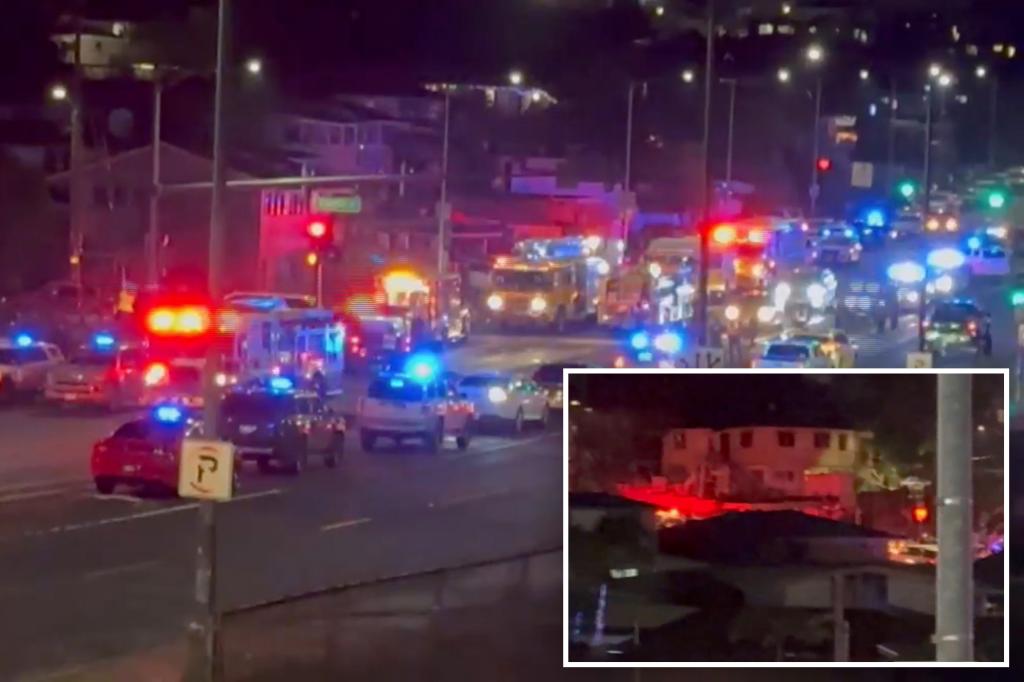The tragic incident that unfolded in the early hours of New Year’s Day in the Salt Lake-Aliamanu neighborhood of Honolulu, Hawaii, serves as a stark reminder of the potential dangers associated with fireworks, especially when mishandled or used improperly. The celebratory atmosphere quickly turned somber as a fireworks-related incident claimed the lives of at least two individuals and left 22 others injured, casting a long shadow over the start of the new year. First responders from the Honolulu Police Department, the Fire Department, and Emergency Medical Services (EMS) rushed to the scene on Keaka Drive to provide immediate medical attention to the victims and secure the area. The scale of the incident prompted authorities to urge the public to avoid the vicinity while emergency operations were underway. While the exact details of the event are still emerging, the initial reports paint a picture of chaos and devastation, leaving the community reeling from the shock and loss.
The incident underscores the critical importance of adhering to safety regulations and exercising extreme caution when handling fireworks. While fireworks displays can add a vibrant and exciting element to celebrations, they possess inherent risks that can lead to catastrophic consequences if not managed responsibly. Factors such as improper storage, faulty fireworks, and lack of proper training or supervision can significantly increase the likelihood of accidents. The tragedy in Honolulu highlights the need for comprehensive public awareness campaigns that educate individuals about the potential hazards of fireworks and emphasize the importance of following safety guidelines. These campaigns should also address the specific risks associated with different types of fireworks and provide clear instructions on their proper usage and disposal.
Furthermore, this incident calls for a thorough investigation to determine the root cause of the tragedy and identify any contributing factors. Understanding the sequence of events that led to the incident is crucial for preventing similar occurrences in the future. The investigation should examine the type of fireworks involved, the manner in which they were handled, and whether any safety regulations were violated. The findings of the investigation can then inform policy decisions and safety recommendations, potentially leading to stricter regulations regarding the sale, use, and possession of fireworks. Such measures could include mandatory safety training for individuals handling fireworks, limitations on the types of fireworks available to the public, and stricter enforcement of existing regulations.
Beyond the immediate response and investigation, the aftermath of this tragedy also highlights the need for comprehensive support systems for the victims and their families. The emotional and physical toll of such an incident can be immense, requiring long-term care and support. This includes access to medical treatment, psychological counseling, and financial assistance to help families cope with the unexpected expenses associated with medical care, funeral arrangements, and lost income. Community resources, such as support groups and counseling services, can also play a vital role in helping individuals process the trauma and begin the healing process. The outpouring of support from the community in the wake of the incident demonstrates the resilience and compassion of the people of Honolulu.
The Honolulu fireworks tragedy serves as a somber reminder that safety should always be the paramount concern during celebrations involving fireworks. While fireworks can enhance the festive atmosphere, their potential for harm cannot be underestimated. This incident underscores the need for a multi-pronged approach to fireworks safety, encompassing public education, stricter regulations, and comprehensive support for victims. By learning from this tragedy and implementing appropriate measures, we can work towards minimizing the risks associated with fireworks and ensuring that future celebrations are not marred by similar incidents. The memory of those lost and injured should serve as a constant reminder of the importance of responsible fireworks usage and the need for continuous efforts to improve safety standards.
This incident should spark a national conversation about fireworks safety and regulations. While individual states and municipalities have their own laws governing the sale and use of fireworks, a national dialogue could lead to the development of more uniform and stringent safety standards across the country. This could potentially involve standardized safety training programs for fireworks handlers, stricter regulations on the types of fireworks available for public sale, and enhanced enforcement mechanisms to ensure compliance with safety guidelines. The goal is to create a culture of safety surrounding fireworks, where individuals understand the potential risks and take the necessary precautions to prevent accidents. The Honolulu tragedy serves as a tragic but necessary catalyst for this important conversation.

